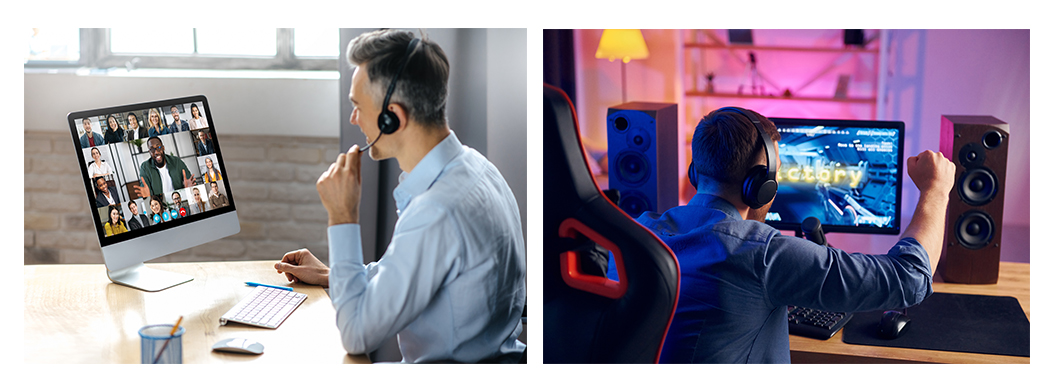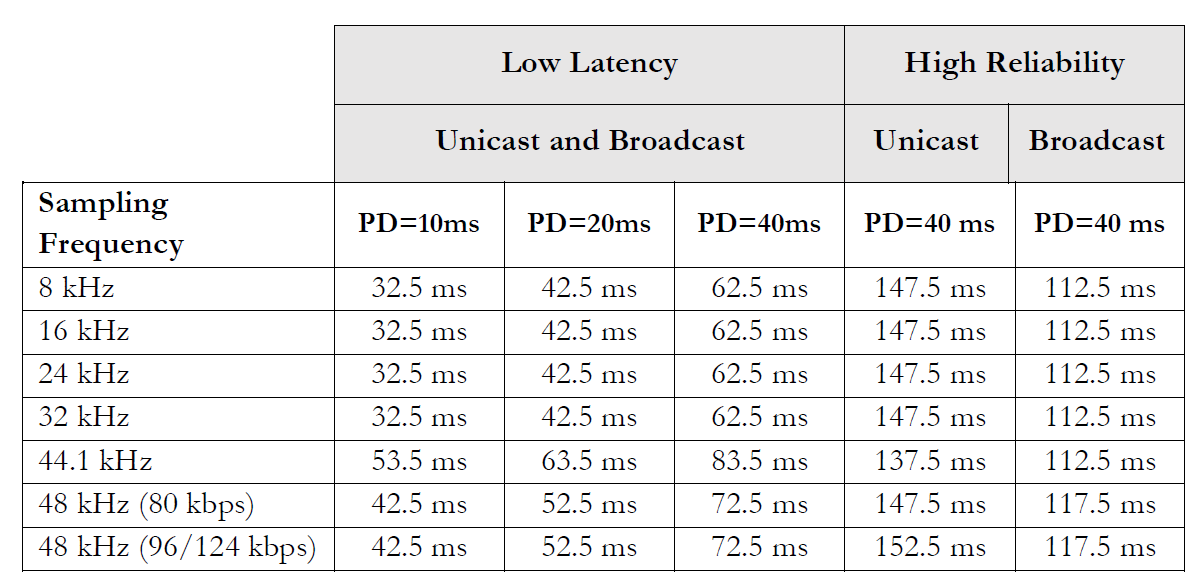Realtek's Bluetooth Low Latency technology provides a precisely synchronized multimedia experience
2023/08/29
According to the information provided by the Bluetooth® SIG in their document "Introducing Bluetooth® LE Audio (Note 1)", a delay of more than 200 milliseconds (ms) between video and audio can lead to visual inaccuracies, causing noticeable differences and impacting the viewing experience. Realtek's Bluetooth Low Latency technology is designed to minimize latency to less than 30 milliseconds (ms), resulting in a more seamless and real-time experience for users. This ensures precise synchronization when watching videos, playing games, or using keyboard input, eliminating any perceived delay.

Bluetooth Low Latency technology
Bluetooth, a wireless communication technology widely used for audio streaming and device connectivity, introduces a certain level of latency in transmitting data. Latency refers to the time delay between when a signal is sent and received, resulting in a delayed audio output. While this delay is inconsequential for listening to music, it becomes noticeable and potentially problematic when watching videos, if it causes a discrepancy between the audio and visual elements. When listening to music through Bluetooth earbuds or speakers, the latency is generally not a cause for concern. However, it has a significant impact on watching videos. When viewing a video, it is important to ensure that the audio and visuals are perfectly synchronized. This will prevent "lip-sync" issues where the speaker's lip movements do not match the audio. Such discrepancies can have a negative impact on the viewing experience and diminish the overall quality of the video.
Low Latency advantages in Vvdeo, virtual meetings, and online gaming
Low latency in Bluetooth technology offers several advantages in various use cases. In gaming, where split-second actions and reactions are crucial, low latency ensures minimal delay between the player's input and the corresponding audio feedback, leading to a more immersive and responsive gaming experience. Similarly, during video conferencing or virtual meetings, reduced latency allows for smoother real-time communication, preventing awkward delays between audio and visual cues. Additionally, low latency enhances the overall quality of media consumption, allowing viewers to enjoy videos, movies, and streaming content without experiencing distracting audiovisual discrepancies.
However, it is important to note that there is often a trade-off between the low latency and the anti-interference capabilities in Bluetooth technology. As efforts are made to reduce latency, the resilience of the Bluetooth connection against interference may be compromised. Bluetooth operates in the crowded 2.4 GHz frequency band, which is shared by various other wireless devices such as Wi-Fi routers, microwaves, and cordless phones. Interference from these devices can disrupt the Bluetooth signal and introduce additional latency.

LE Audio LC3 Codec accurately predicts the latency time
Whenever wireless transmission technology is used, there is a possibility of encountering interference that can lead to latency and audio data loss. One possible solution to this problem is to utilize encoders for compressing audio files and transmitting multiple copies of the data. The encoder digitizes the analog signal and then decodes it to the receiver. However, using a decoder has drawbacks, as it may increase signal latency (Figure 1, note 2). In recent years, the Bluetooth SIG has introduced the LE Audio LC3 Codec for LE Audio. LC3 is a new Bluetooth encoder that can transmit the same audio quality at a lower bit rate. The total size of an LC3-encoded data packet is approximately half the size of an SBC data packet, effectively reducing latency.

Figure 1: The elements of latency in an audio transmission
Furthermore, through the design architecture of the LC3 codec in LE Audio, delay figures can be estimated using parameters while balancing high reliability and low latency, effectively optimizing the delay issue (as shown in Figure 2, note 3).

Figure 2: Typical end-to-end latencies for BAP QoS settings
Realtek's Bluetooth Low Latency technology minimizes latency to less than 30 milliseconds
Realtek has optimized the encoding and decoding delays by utilizing more efficient compression algorithms to reduce data processing time. Realtek's efficient anti-interference technology also ensures stable wireless transmission with low transport delay, guaranteeing video or audio quality remains unaffected. This is complemented by a hardware design to enhance the processing speed and efficiency. When products simultaneously utilize RTL8763EAU Tx and RTL8763E series Rx ICs, the overall delay for encoding and decoding can be reduced to below 30 milliseconds, providing users with a smoother, real-time, and seamless experience, ensuring precise synchronization when watching videos, playing games, or using keyboard input, eliminating any perceived delays.
Lastly, to ensure a seamless audiovisual experience, low latency in Bluetooth remains an ongoing pursuit. As wireless audio and video streaming demands continue to grow, advancements in Bluetooth technology play a crucial role in minimizing delays and enhancing synchronization, thus providing users with the best precisely synchronized multimedia experience.
• Reference Source
Note 1: Nick Hunn, (2022), Introducing Bluetooth® LE Audio, Chapter 5 - LC3, 129, https://www.bluetooth.com/bluetooth-resources/le-audio-book/
Note 2: Nick Hunn, (2022), Introducing Bluetooth® LE Audio, Chapter 5 - LC3, 126, https://www.bluetooth.com/bluetooth-resources/le-audio-book/
Note 3: Nick Hunn, (2022), Introducing Bluetooth® LE Audio, Chapter 5 - LC3, 140, https://www.bluetooth.com/bluetooth-resources/le-audio-book/


